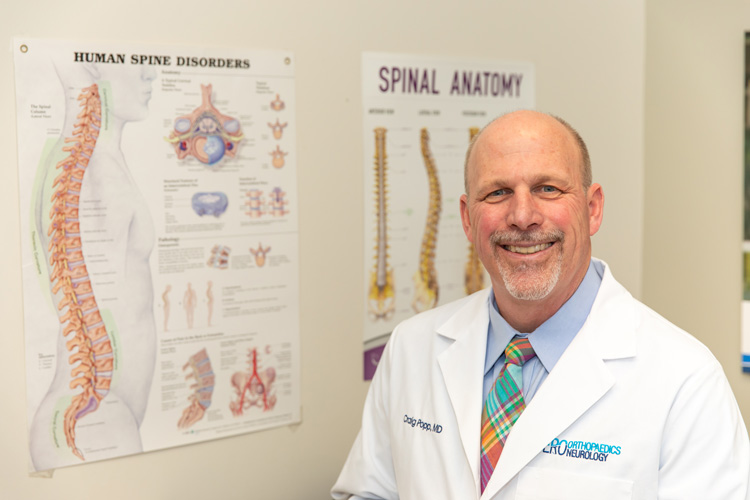
You’ve heard the expression “less is more,” but it’s not a phrase often used in medicine. It seems there are always more tests, more medications and more of all the things patients hate about getting medical care.
When it comes to back or neck surgeries to relieve pain, though, there is a rapidly growing body of evidence that “less” – newer, smaller, less invasive procedures and implants – are yielding “more” better and better patient results, along with greater and greater patient satisfaction.
At or near the top of that list, according to board-certified orthopedic surgeon Dr. Craig Popp of Vero Orthopaedics & Neurology, is something called “motion-sparing spine surgery.”
Washington, D.C.’s Georgetown University Hospital wholeheartedly agrees. “Traditionally,” it says, “surgeons treated conditions that put pressure on the spinal cord and related nerves with fusion surgery. Fusion surgery merges the vertebrae causing your problem, which relieves pain and pressure, but also restricts your ability to move.
“Motion-sparing spinal surgery gives you the best of both worlds – it relieves pressure on your spinal cord and preserves your range of motion – without fusion.”
The laparoscopic, minimally invasive surgery involves placing small, hard artificial discs between vertebrae to stabilize them and relieve pressure on nerves.
And, for the record, if you’ve never suffered from back or neck pain so severe that you sought medical help, you are part of a minority in America.
According to both the National Institutes of Health and Johns Hopkins Medicine, nearly 80 percent of U.S. adults experience back pain – which is more than 242 million people.
At the same time, upwards of 50 percent of American adults experience neck pain.
And, unfortunately for many Vero readers, neck and back problems get more common – and painful – as we age, according to the Centers for Disease Control.
But don’t expect Popp to rush you into surgery. For starters, says Popp, “the vast majority of people can get better without any sort of intervention.”
What’s more, he likes to spend considerable time with his patients before making treatment decisions.
Instead of a typical 10-to-15-minute initial office visit, Popp says, “I end up spending probably about 40 minutes with the patient.”
That time is not used for technical medical discussions, for the most part, and it’s highly unlikely you’ll hear about ‘vertebrobasilar nerve ablations’ or ‘mobi-C cervical replacement discs’ or ‘coflex interlaminar stabilizations’ in that first meeting if you seek this doctor’s care.
“I treat people,” says Popp, “and the way I approach that is basically talking to the patient and getting to know the patient. Eighty-five percent [of making the right diagnosis] is by taking a history and by listening.”
Moreover, says Popp, “two people may have the same exact same condition, the same exact symptoms, but they have different goals, different expectations. Everyone doesn’t fit into the same mold. What’s causing me pain may not be causing you pain. And, people have different opinions on what their pain levels are or what they consider painful.”
And while Popp is clearly energized by today’s motion-sparing techniques, he also cautions that they are not right for everyone.
“You don’t want to do it in a person that has so much arthritis that you actually might make things worse,” Popp explains. “You’ve got to pick and choose. And, again, listen to the patient.”
He also is sensitive to the fact that surgery of any kind – even minimally invasive surgeries – can be downright scary for patients.
“I think we surgeons sometimes become immune to how scary it is for them,” Popp says. “We do it all the time. But for that patient, you know what? It’s often the first time [he or she] is having surgery.”
Still, supported by what amounts to a comprehensive spinal center’s worth of resources and staffing, Popp is clearly confident that – with or without surgery – he and his colleagues at Vero Orthopaedics & Neurology can help make back or neck pain little more than a memory for the vast majority of patients – though he admits he often hopes for more than just a successful outcome.
“I do love it when I get a hug from a patient. That’s always a nice thing.”
Dr. Craig Popp is with Vero Orthopaedics & Neurology at 1155 37th Lane in Vero Beach, where the phone number is 772-569-2330, and 801 Wellness Way, Suite 100 in Sebastian, where the phone number is 772-388-9510.



